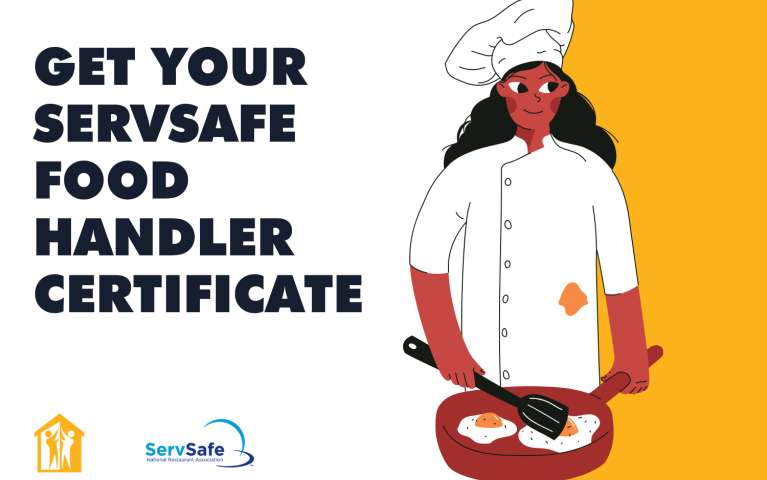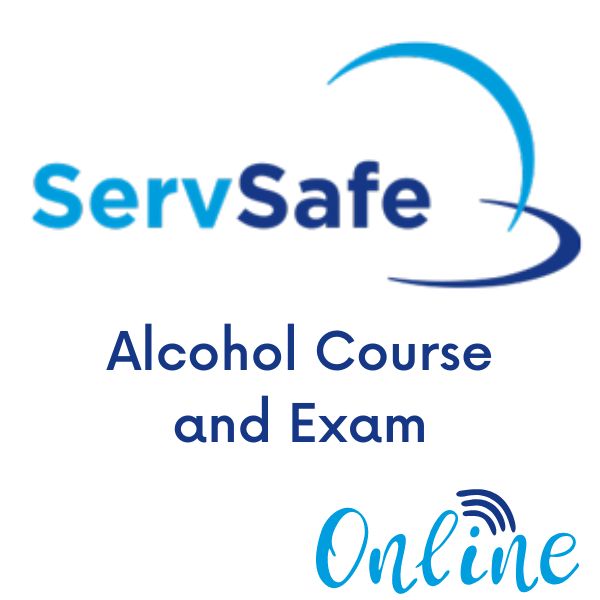The Ultimate Guide to Becoming a Certified ServSafe Food Handler in Your State
The Ultimate Guide to Becoming a Certified ServSafe Food Handler in Your State
Blog Article
Comprehensive Food Handlers Training for Hygiene and Safety And Security
In today's quickly developing food service landscape, thorough food handlers training has arised as a critical part for guaranteeing health and safety and security. By instilling important techniques connected to hand hygiene, food storage space, and sanitation, this training not just mitigates the risk of foodborne health problems but likewise reinforces conformity with regulatory criteria. The effects of such training extend past plain compliance; they touch upon public health and consumer trust. The performance of these training programs can vary significantly. What elements truly determine their success in cultivating a society of safety?
Importance of Food Security Training

Additionally, food safety training helps to ensure that workers are aware of current policies and standards, which are necessary for preserving functional licenses and preventing expensive charges. Normal training sessions likewise function as a platform for reinforcing ideal practices, consequently decreasing the probability of human error, which often offers as a leading reason of food contamination.
Furthermore, buying food safety and security training can enhance a facility's online reputation, as clients increasingly prioritize eating experiences that mirror high safety and security criteria. Such proactive procedures not just secure consumers but also add to the long-term success of food businesses. In summary, comprehensive food safety and security training is an important aspect of food solution procedures, straight impacting both public wellness and organization sustainability.
Key Concepts of Hygiene
Preserving high standards of hygiene is essential in any type of food taking care of setting to stop contamination and make sure the security of customers. The key principles of health incorporate a number of crucial techniques that food handlers have to constantly apply.
First, hand health is paramount; food trainers ought to wash their hands thoroughly with soap and water prior to and after dealing with food, along with after utilizing the toilet or touching any possibly contaminated surface areas. Equipment and surface areas should be regularly cleaned up and sterilized to remove virus. This consists of utensils, cutting boards, and counter tops, which must be kept in a clean problem.


Correct food storage is likewise crucial; raw foods must be kept independently from cooked or ready-to-eat things to stay clear of cross-contamination. servsafe certifications. In addition, preserving suitable temperature controls is important; disposable products must be maintained at risk-free temperatures to inhibit microbial development
Finally, individual health can not be ignored. Food handlers should wear clean apparel, usage hair restraints, and stay clear of working when ill. By sticking to these vital principles of hygiene, food trainers can dramatically lower the threat of foodborne health problems and promote a safer eating experience for all consumers.
Common Foodborne Health Problems
Although numerous foodborne illnesses can be protected against through correct hygiene and secure food managing practices, they stay a substantial public health and wellness issue. Foodborne virus can result in a selection of health problems, varying from mild intestinal distress to severe problems and even fatality.
Typical foodborne illnesses consist of salmonellosis, caused by Salmonella bacteria, typically connected to undercooked chicken and look these up eggs. An additional widespread disease is listeriosis, connected with raw milk items and ready-to-eat meats, which can be particularly unsafe for expectant women and immunocompromised people. Norovirus, frequently contracted from polluted food or surface areas, is recognized for its quick spread and ability to trigger outbreaks in public settings.
Escherichia coli (E. web coli) infection, especially related to undercooked ground beef and infected fruit and vegetables, can bring about serious abdominal pains and kidney failing sometimes. Additionally, Clostridium perfringens, typically discovered in big amounts of food that are poorly kept, can create gastrointestinal disorder with symptoms appearing soon after intake.
Recognizing these ailments is crucial for food handlers, as awareness can considerably minimize the risk of contamination and protect public health. Proper education and training are vital components in combating foodborne diseases.
Best Practices for Food Handling
Reliable food taking care of techniques are vital in protecting against the spread of foodborne ailments. To start with, appropriate hand hygiene is vital; food trainers need to clean their hands completely with soap and water before and after handling food, specifically raw meat or fowl - servsafe alcohol. This easy activity considerably reduces the risk of cross-contamination
Secondly, maintaining proper food storage temperatures is crucial. Disposable items need to be kept at or below 40 ° F(4 ° C) to prevent bacterial development. Additionally, cooked foods need to be kept above 140 ° F(60 ° C) till served.
Finally, making certain cleanliness of surface areas and equipment is vital. Consistently sterilize kitchen counters, cutting boards, and utensils, especially after preparing raw foods. Usage different cutting boards for ready-to-eat and raw foods to further lessen contamination dangers.
Moreover, when preparing food, it is crucial to adhere to the concept of "very first in, initially out" (FIFO) to handle inventory efficiently and minimize wasting. Always adhere and review to food item tags for secure cooking temperature levels and managing guidelines. By carrying out these finest methods, food handlers can dramatically this page improve food security and safeguard public health.
Applying a Safety And Security Society
Creating a safety and security society within a food managing setting is vital for promoting a commitment to food safety amongst all team member. This society stresses the value of food security as a shared obligation, encouraging staff members to prioritize hygiene practices continually.
To apply a safety society, organizations ought to start by offering comprehensive training that attends to food handling methods, prospective hazards, and the significance of personal health. Training sessions should be interactive and tailored to the details functions of team member, making sure relevance and involvement.
Moreover, management plays a vital role in establishing this society. Monitoring must design safe methods and connect the relevance of food security regularly. Recognizing and rewarding employees that promote safety requirements can further enhance these behaviors.
Furthermore, open interaction networks have to be established, allowing staff to report security problems without anxiety of repercussion. Routine security audits and comments sessions can help identify areas for improvement and strengthen liability.
Inevitably, cultivating a safety and security culture not only enhances conformity with food safety policies however also safeguards public health and wellness, promotes worker morale, and contributes to the overall success of the food dealing with establishment.
Conclusion
Finally, extensive food trainers training plays a pivotal function in advertising health and safety and security within food solution facilities. By gearing up employees with necessary understanding about food safety and security concepts, common foodborne diseases, and best techniques for taking care of food, such training significantly decreases health risks. Promoting a culture of safety and security improves the facility's reputation and straightens with consumer expectations for high security standards, inevitably adding to public wellness protection and the total success of the food solution sector.
In today's rapidly advancing food service landscape, detailed food trainers training has emerged as an essential element for making certain hygiene and safety.Food safety training is critical for maintaining high standards in food handling and preparation, with research studies showing that appropriate training can lower foodborne diseases by up to 30%. In recap, detailed food security training is an essential aspect of food service operations, directly affecting both public health and wellness and service sustainability.

Report this page